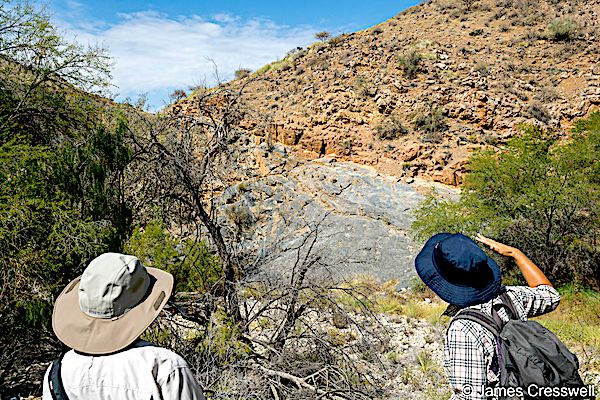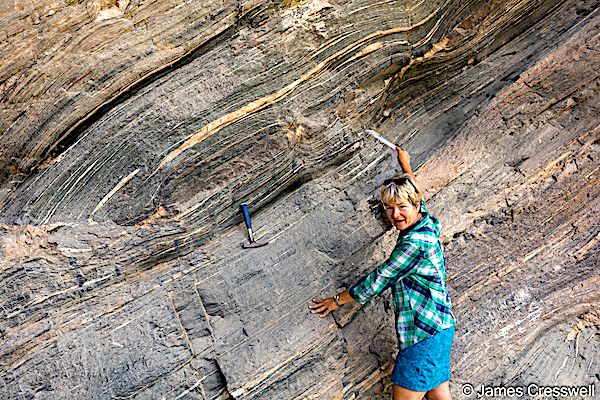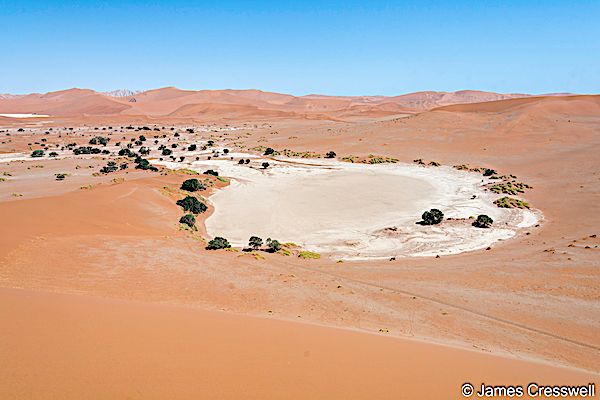Namibia: A Geological Safari By James Creswell
At the last meeting James Creswell of Geo World Travel https://www.geoworldtravel.com/ ) spoke about the geology of Namibia. His company leads many geological field trips every year with Namibia being one of them. The talk is based on a tour of Namibia commencing and finishing at Windhoek.
Namibia has a very varied geology and covers a vast time span. In fact the geology encompasses rocks of Archaean to Phanerozoic age and as such covers more than 2.6 billion years. About half of the country's surface area is bedrock exposure, while the remainder is covered by Cenozoic deposits of the Kalahari and Namib Deserts.
The north and south of the country were once two separate cratons which were once part of of the earlier super continent of Rodinia. Then during the Ediacaran and Cambrian periods ( 550-500Ma) the two collided during the Damara Orogeny. The resultant mountains have since eroded leaving central Namibia consisting of metamorphic inliers from the eroded roots of the mountains. The Damara Orogeny was actually part of a large Pan African Orogeny that created Gondwanaland. As the Cratons collided a thrust fault was created where older carbonate rocks slid as a ‘nappe’ over younger limestone rocks lubricated by a salty layer ( the Sole Dolomite). This is the Naukluft Thrust Fault and can be viewed in the Namib-Naukluft National Park.

Nicole Grünert points to the Naukluft Thrust Fault
The oldest rocks to be seen are to be found at the Etosha national park and here you can find 2.2Ga paragneiss from the Congo Craton. Also in this area are drop-stones which fell out of ice-shelves or icebergs onto seafloor during one of the earth’s Snowball Earth episodes (630Ma). The Snowball Earth deposits themselves are covered by tropical carbonates known as Cap Carbonates. Other ancient rocks can be found near Kobos where there is an outcrop of Kalahari Craton basement granite which is 1Ga in age.
At Swakopmund basalt which formed as the super continent of Rodinia rifted apart was compressed and metamorphosed to amphibolite during the Pan-African Orogeny can be found as can rocks from the Matchless Belt which are thought to be an ophiolite.This belt lies between the Kalahari and Congo Cratons. Also at Swakopmund the world’s largest displayed quartz Crystal can be seen in the Crystal Gallery (Kristall Gallerie).

Nicole Grünert points to boudins in amphibolite which were once basalt dykes which later got metamorphosed in the Damara orogeny
As well as ancient rocks Namibia also boasts the presence of the oldest shelly fossils. These are the Namacalathus (549-542Ma) and their discovery caused the Precambrian (Edicarian)/Cambrian boundary to be revised back in time. These fossils are to be found in the area of the Tsaris Mountains.
The Erongo Complex is the eroded core of a huge volcano which has peripheral and central granite intrusions. Formed about 137-124Ma when Africa and South America were splitting apart to form the south Atlantic. The Erongo at 35km diameter is one of the largest Cretaceous granitic complexes in northern Namibia. It consists of both intrusive and extrusive rocks. The igneous activity gave rise to many different minerals which are sought after around the world. Similarly the Brandberg Massif ( Namibia’s highest mountain) is is a single mass of granite that pierced its way through the Earth’s crust into the Namib Desert during this time and is composed of homogeneous medium grained biotite-hornblende granite.
During the Carboniferous the whole of southern Africa was buried under a thick ice sheet. But during the Permian temperatures rose giving rise to an increase in fauna and flora. Now the remains of trees (Dadoxylon) can be found in rocks of the Lower Karoo Supergroup and is known as the “Petrified Forest” and has the biggest accumulation of these trees in southern Africa. They were deposited in an ancient river channel during flash flooding.
Jurassic sandstone may be found at the Waterberg Escarpment. This formed by the reactivation of a precambrian fault (Damaran) when Gondwana split to form the Atlantic. This caused Jurassic age Karoo sediments to be thrust over other Jurassic age sediments. Erosion of sediment has left the escarpment as seen today. The Waterberg Plateau is a popular national park.
One of Namibia’s great natural wonders is the Sossusvlei Pan and surrounding desert sand dunes. It is part of the Namib-Sand-Sea UNESCO site. The name translates to “dead-end marsh”. It is a clay and salt pan and is the terminus of the seasonal Tsauchab ephemeral river which is preventd from flowing all the way to the sea by the sand dunes of the Namib Desert. Some of the dunes are over 400m tall and are among the highest in the world. They are derived from material that eroded from the highlands of South Africa and Lesotho and was transported to the Namibian coast by rivers. This material was then blown onto land during the ice-age. The dunes have a red colour due to the grains of sand having a coating of iron oxide. In some places the dunes have a yellow colour due to the grains having a coating of clay particles from eroded local limestones.
What a truly remarkable place Namibia appears to be.

Deadvlei salt pan in the Namib Sand Sea UNESCO World Heritage Site